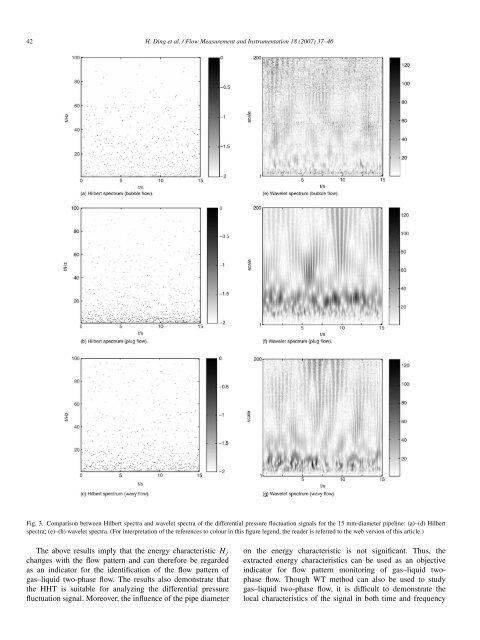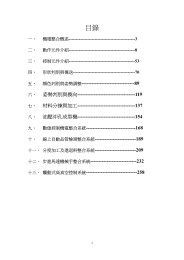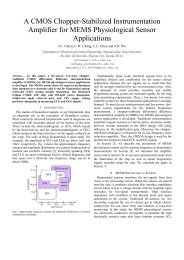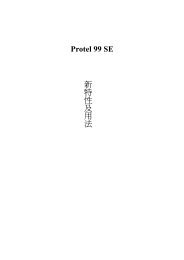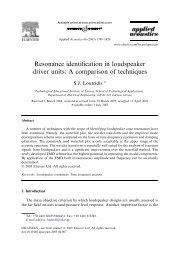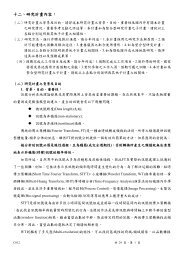Hilbert-Huang transf..
Hilbert-Huang transf..
Hilbert-Huang transf..
You also want an ePaper? Increase the reach of your titles
YUMPU automatically turns print PDFs into web optimized ePapers that Google loves.
42 H. Ding et al. / Flow Measurement and Instrumentation 18 (2007) 37–46<br />
Fig. 3. Comparison between <strong>Hilbert</strong> spectra and wavelet spectra of the differential pressure fluctuation signals for the 15 mm-diameter pipeline: (a)–(d) <strong>Hilbert</strong><br />
spectra; (e)–(h) wavelet spectra. (For interpretation of the references to colour in this figure legend, the reader is referred to the web version of this article.)<br />
The above results imply that the energy characteristic H j<br />
changes with the flow pattern and can therefore be regarded<br />
as an indicator for the identification of the flow pattern of<br />
gas–liquid two-phase flow. The results also demonstrate that<br />
the HHT is suitable for analyzing the differential pressure<br />
fluctuation signal. Moreover, the influence of the pipe diameter<br />
on the energy characteristic is not significant. Thus, the<br />
extracted energy characteristics can be used as an objective<br />
indicator for flow pattern monitoring of gas–liquid twophase<br />
flow. Though WT method can also be used to study<br />
gas–liquid two-phase flow, it is difficult to demonstrate the<br />
local characteristics of the signal in both time and frequency


